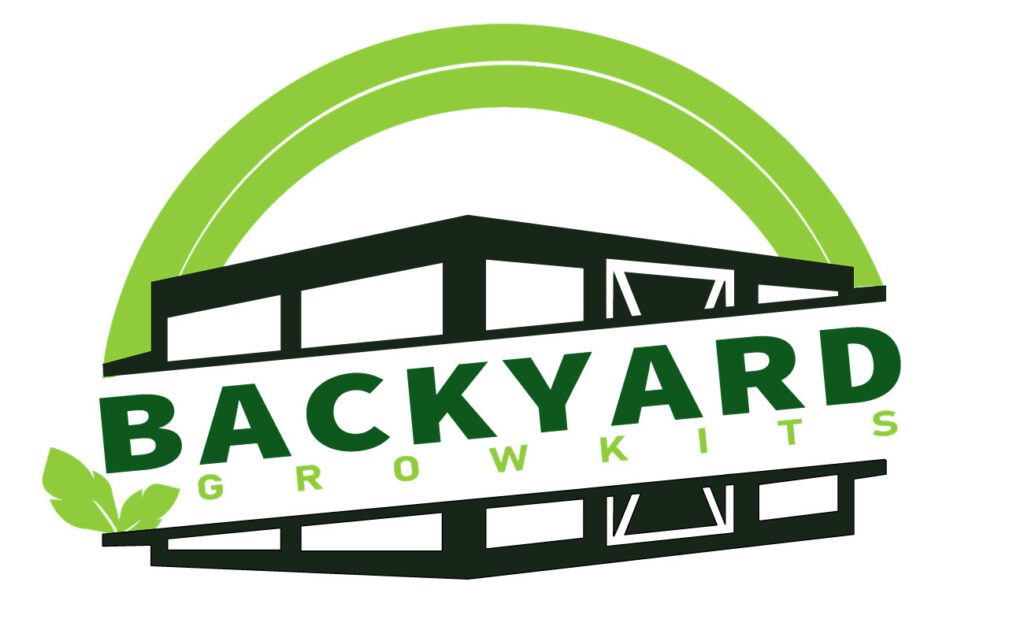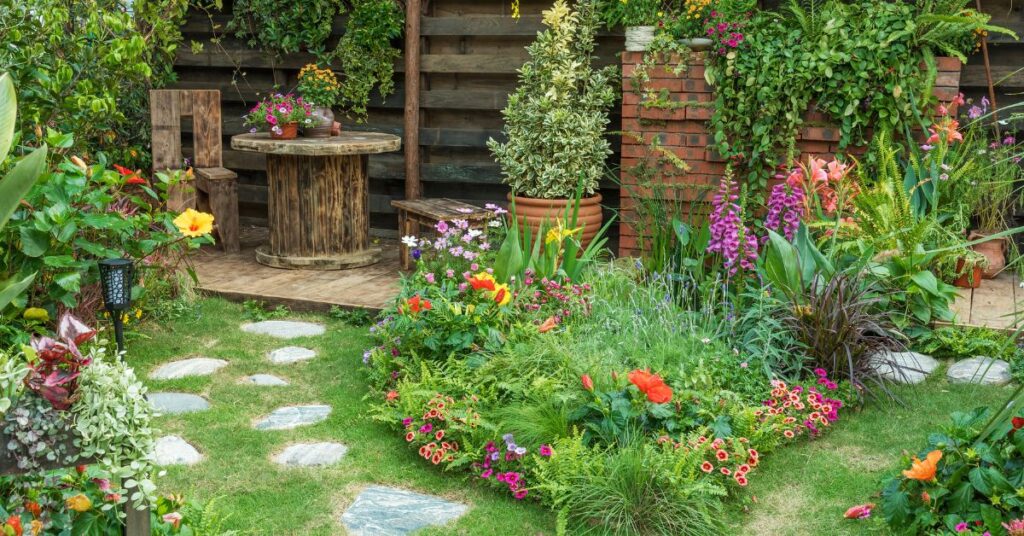Have you ever dreamt of growing fruits and vegetables in your backyard?
With the rising popularity of homegrown produce and the undeniable satisfaction of harvesting your own crops, starting a backyard garden has become an increasingly appealing hobby for many. This article will explore the essential steps and tips for creating a successful and thriving backyard garden.
Backyard gardening is not only a fun and rewarding activity, but it also provides numerous health and environmental benefits.
By growing your own produce, you can ensure that your fruits and vegetables are free from harmful pesticides and other chemicals, and you can significantly reduce your carbon footprint by reducing the need for transportation and storing store-bought produce.
Plus, the physical activity involved in gardening can help to keep you active and healthy.
Whether you’re a seasoned gardener looking to expand your knowledge or a complete beginner eager to dive into backyard gardening, this comprehensive guide will provide all the information you need to start your journey toward a bountiful and beautiful backyard garden.
Top benefits of starting a backyard garden
Starting a backyard garden offers numerous benefits for your health and the environment. One of the most obvious benefits is the ability to grow your own fresh, organic produce.
This ensures that your fruits and vegetables are free from harmful chemicals and allows you to enjoy the unbeatable taste and nutritional value of homegrown produce.
In addition to providing delicious, healthy food, backyard gardening offers various mental and physical health benefits.
Gardening is a natural stress reliever, allowing you to unwind and clear your mind while focusing on nurturing your plants.
The physical activity involved in gardening can also help to keep you fit and healthy, improving your overall well-being.
From an environmental perspective, backyard gardening is a great way to reduce your carbon footprint and contribute to a more sustainable lifestyle.
By growing your produce, you can significantly reduce the need for transportation and storage of store-bought produce, contributing to greenhouse gas emissions.
A backyard garden can also help promote biodiversity and support local wildlife, benefiting the environment.
Choosing the right location for your backyard garden
The location of your backyard garden is one of the most critical factors in determining its success. When selecting the perfect spot for your garden, there are a few key considerations to keep in mind:
Sunlight: To thrive, most vegetables require at least 6-8 hours of direct sunlight per day. Be sure to choose a location that receives ample sunlight throughout the day. Observe your backyard at different times to determine which areas receive the most sun.
Drainage: Proper drainage is essential for healthy plant growth. Avoid areas with standing water or where water pools after heavy rain. If your yard has poor drainage, consider building raised beds or installing a drainage system to improve soil conditions.
Soil quality: Healthy soil is the foundation of a successful garden. Conduct a soil test to determine your chosen location’s pH, nutrient levels, and potential contaminants.
This information will help you make informed decisions about soil amendments and the types of plants best suited to your garden.
Accessibility: Ensure your garden is easily accessible for planting, watering, and harvesting. Consider the proximity to your house, a water source, and necessary tools and equipment.
Essential gardening tools and equipment

The right tools and equipment will make your backyard gardening experience more enjoyable and efficient. Here are some essential gardening tools to consider investing in:
Gardening gloves: Good gardening gloves will protect your hands from dirt, thorns, and potential irritants while working in the garden.
Trowel: A trowel is a small, handheld tool with a pointed scoop perfect for digging small holes, transplanting seedlings, and mixing soil.
Shovel: A sturdy shovel is essential for digging larger holes, turning soil, and moving compost or mulch.
Garden fork: A garden fork is a versatile tool that can be used for breaking up compacted soil, aerating, and turning compost.
Pruner: A sharp, high-quality pruner is essential for trimming and shaping plants and removing dead or diseased growth.
Garden hoe: A garden hoe is useful for breaking up soil, weeding, and creating furrows for planting.
Watering can or hose: A watering can or hose with a spray attachment is necessary for keeping your garden well-hydrated.
Wheelbarrow: A wheelbarrow is a valuable tool for transporting soil, compost, mulch, and other materials around your garden.
Selecting the best vegetables for your backyard garden
Choosing the right vegetables for your backyard garden is important in ensuring a successful harvest. Consider the following factors when selecting your crops:
Climate: Choose vegetables well-suited to your local climate and growing conditions. Consult your local extension office or gardening center for recommendations on the best plants for your area.
Space: Consider the amount of space you have available in your garden and the mature size of the plants you wish to grow. Plan your garden layout accordingly to ensure that each plan thus sufficient room to grow and thrive.
Time to maturity: Different vegetables have varying maturity timelines, ranging from a few weeks to several months. Consider your gardening goals and timeline when selecting your crops.
Yield: Some vegetables, such as tomatoes and peppers, produce a high yield per plant, while others, such as corn and pumpkins, require more space but produce a lower yield. Choose vegetables that match your gardening goals and needs.
Personal preferences: Ultimately, the vegetables you grow should match your tastes and preferences. Consider what you enjoy eating and what will contribute to a well-balanced and nutritious diet.
Some popular vegetables for backyard gardens include tomatoes, peppers, cucumbers, zucchini, lettuce, spinach, carrots, and beans.
Consider starting with easy-to-grow crops, such as herbs or leafy greens, before moving on to more challenging plants.
Soil preparation and composting basics
Healthy soil is essential for a thriving backyard garden. Proper soil preparation and composting can help to improve soil quality and provide the necessary nutrients for plant growth.
Here are some essential steps for preparing your soil and composting:
Soil preparation: Before planting, it’s important to prepare your soil by removing weeds, rocks, and debris and breaking up any compacted areas.
You may also need to amend your soil by adding organic matter, such as compost or aged manure, to improve soil structure and fertility.
Composting: Composting breaks down organic materials, such as food scraps and yard waste, into a nutrient-rich soil amendment.
Composting can help to reduce waste, improve soil quality, and reduce the need for chemical fertilizers.
To start composting, create a pile of organic materials in a designated area of your yard, alternating layers of brown (dry) materials, such as leaves or straw, and green (wet) materials, such as vegetable scraps or grass clippings.
Keep the pile moist and turn it regularly to speed up decomposition.
Mulching: Mulching is covering the soil around your plants with a layer of organic material, such as straw or leaves. Mulching helps to retain moisture, regulate soil temperature, and suppress weeds.
Planting and maintaining your backyard garden
Once you’ve selected your crops, prepared your soil, and composted, it’s time to start planting! Here are some essential tips for planting and maintaining your backyard garden:
Planting: Follow the planting instructions for each crop, including the recommended spacing, depth, and planting time. Be sure to water your plants immediately after planting to promote healthy growth.
Watering: Consistent watering is essential for a healthy garden. Water your plants deeply and regularly, taking care not to overwater or underwater. Consider using a drip irrigation system or soaker hose to conserve water and promote even watering.
Fertilizing: Depending on your soil quality and crop needs, you may need to fertilize your garden regularly. Consider using organic fertilizers, such as compost or aged manure, to provide the necessary nutrients without introducing harmful chemicals.
Weeding: Regular weeding is necessary to prevent weeds from competing with your plants for nutrients and water. Consider using mulch or a weed barrier to reduce the need for frequent weeding.
Pruning: Regular pruning helps to promote healthy growth and prevent disease. Remove any dead or diseased growth and shape your plants as needed.
Pest control and organic gardening techniques
Pest control is an essential part of backyard gardening, but it’s important to use organic and environmentally friendly methods to ensure the health of your plants and the surrounding ecosystem. Here are some tips for natural pest control and organic gardening techniques:
Companion planting involves planting certain crops together to repel pests, attract beneficial insects, and promote healthy growth. For example, planting marigolds with tomatoes can help to repel aphids, while planting basil with tomatoes can improve tomato flavor and repel pests.
Natural repellents: Consider using natural pest repellents, such as garlic or hot pepper spray, to deter pests. You can also use physical barriers like row covers or netting to protect your plants from pests.
Handpicking: Regularly inspect your plants for pests and remove them by hand if possible. This can help to prevent infestations and reduce the need for chemical pesticides.
Crop rotation: Crop rotation involves planting different crops in different areas of your garden each year to prevent soil-borne diseases and pests from building up. Consider rotating your crops every year to promote healthy soil and plant growth.
Beneficial insects: Encourage beneficial insects, such as ladybugs and lacewings, to visit your garden by planting flowers and herbs that attract them. These insects can help to control pest populations naturally.
Harvesting and storing your garden produce
The ultimate goal of backyard gardening is to harvest and enjoy fresh, organic produce! Here are some tips for harvesting and storing your garden produce:
Harvesting: Harvest your crops when they are ripe and ready to eat. Different crops have different optimal harvest times, so research the best time to harvest each plant. Use sharp pruning shears or a knife to prevent damage to the plant.
Storing: Store your harvested produce in a cool, dry place like a root cellar or refrigerator. Some crops, such as tomatoes and peppers, can temporarily be stored at room temperature. Consider canning or freezing excess produce to enjoy throughout the year.
Preserving: Preserve your harvested produce by canning, pickling, or dehydrating. These methods can help extend your produce’s shelf life and provide delicious and healthy meals throughout the year.
Conclusion and next steps for your backyard garden journey
Starting a backyard garden is a fun and rewarding hobby with numerous health and environmental benefits.
By following these essential tips for creating a successful backyard garden, you can enjoy homegrown produce’s unbeatable taste and nutritional value, reduce your carbon footprint, and promote a more sustainable lifestyle.
Whether you’re a seasoned gardener or a beginner, the key to a thriving backyard garden is consistent care, patience, and a love for nature.
So what are you waiting for? Grab your gardening gloves and get started on your backyard garden journey today!

